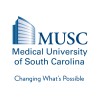
Psychometric Properties of Motor Recovery Assessment Scales for Stroke
StrokeStroke is a common global health-care problem that is serious and disabling. In high-income countries, stroke is the third most common cause of death and is the main cause of acquired adult disability. The most common and widely recognised impairment caused by stroke is motor impairment, in function. Measuring motor recovery can assist the clinician in diagnosis, selection of the most appropriate therapy, and outcome measurement. To date, different functional scales measuring motor recovery have been developed and used in stroke. However, only a few are specifically designed for stroke patients. The Fugl-Meyer assessment (FMA) and The Stroke Rehabilitation Assessment of Movement(STREAM) and Rivermead Motor Assessment(RMA) are the most commonly used for measuring motor recovery in stroke patients. To be clinically useful, a scale must be scientifically sound in terms of 3 basic psychometric properties: reliability, validity, and responsiveness. The objective of this study will be to compare the three clinical motor recovery measures, The Fugl-Meyer assessment motor domain (FMA-M) and mobility subscale of The Stroke Rehabilitation Assessment of Movement (STREAM) and Rivermead Motor Assessment (RMA), in stroke patients with a broad range of neurological and functional impairment from the acute stage up to 120 days after onset. stroke patients will be followed up prospectively with the 3 measures 30,60,90, and 120 days after stroke onset (DAS). Reliability (interrater reliability and internal consistency) and validity (concurrent validity, convergent validity, and predictive validity) of each measure will be examined. A comparison of the responsiveness of each of the 3 measures will be made on the basis of the entire group of patients. the degrees of responsiveness of the 3 balance measures will be calculated on the basis of the changes occurring between 30 to 60, 60 to90, and 90 to 120, and 30 to 120 DAS. Collected data will be analyzed by using spss 21.

Robotic Rehabilitation Treatment of Stroke Patients
StrokeAcute2 moreStorke results in severe deterioration in quality of life and exercise. Severe disorders need to be treated as soon as possible and they need to be rehabilitated quickly in order for motor functions to develop properly. In the acute / subacute phase, patients are given robotic treatment. In addition to the study of mtoros functions, the study of gait and codination is the primary result. Patients treated with soft exoskeleton receive 15 treatments and movement testing is performed continuously. Members of the control group receive standard rehabilitation therapy. After 3 weeks, both groups will participate in a control study and then in a repeat control study at week 6. Our main goal is to compare the results and determine the efficiency of the robotic device.

Serotonin Selective Reuptake Inhibitor (SSRI) Effects on Cerebral Connectivity in Acute Ischemic...
StrokeFluoxetine action on cerebral connectivity changes in acute ischemic stroke patients

Effectiveness of Virtual Reality Gaming Therapy Versus CI Therapy for Upper Extremity Rehabilitation...
StrokeHemiparesisThe current proposal aims to conduct a multi-site randomized controlled trial comparing virtual-reality gaming delivery of Constraint Induced Movement therapy (CI therapy) with (1) traditional clinic-based CI therapy of equal total active therapy duration and (2) a control group equating the dose of in-person therapy. Individuals with chronic stroke will be randomized to one of four different interventions: (1) traditional clinic-based CI therapy (35 therapist/client contact hours), (2) therapist-as-consultant virtual reality CI therapy (5 therapist/client contact hours in the clinic and 15 hours of independent game play at home), (3) therapist-as-consultant virtual reality CI therapy with additional therapist contact via telerehabilitation (5 therapist/client contact hours in the clinic, 2.6 therapist contact hours via teleconference, and 15 hours of independent game play in the home), and (4) 5 hours of standard occupational therapy (OT) / physical therapy (PT). After 6-month follow-up, individuals assigned to standard OT/PT will cross over to a modified gaming therapy condition (a stand-alone application of the rehabilitation game without additional therapist contact).

Optimizing Current and Electrode Montage for Transcranial Direct Current Stimulation in Stroke Patients...
StrokeThe purpose of this study is to determine the optimal transcranial direct current stimulation (tDCS) amplitude and electrode montage that is both safe and efficacious

Neuromodulation With rTMS in Dysphagic Patients With Stroke
Transcranial Magnetic StimulationThe patients with chronic dysphagia secondary to first-ever stroke were randomly assigned to 2 groups: Group A: sham stimulation for 10 minutes , Group B: real rTMS for 10 minutes. rTMS conditioning: daily rTMS 10 min for 10 days. Assessments: 1. videofluoroscopy,2.Functional outcome swallowing scale (3 scales). 3. MEP measurements

Pivotal Study of VNS During Rehab After Stroke (VNS-REHAB)
Cerebrovascular StrokeUpper Extremity ParesisThis is a pivotal phase study of up to 120 subjects and 15 clinical sites. All subjects are implanted with the Vivistim System® and then randomized to either study treatment or active-control treatment. The randomization will be stratified by age (<30, >30) and baseline FMA UE (20 to <35; >35 to 50). Study treatment is vagus nerve stimulation (VNS) delivered during rehabilitation. Active control treatment is rehabilitation (standard-of-care treatment) with only a minimal amount of VNS at the start of each session intended to support blinding.

Atherosclerosis and Acute Ischemic Stroke Study
AtherosclerosisInflammation1 moreA significant proportion of strokes are thromboembolic in nature, arising from atherosclerotic plaque at the carotid bifurcation. It is now wellknown that inflammation plays a key role in atherogenesis and plaque destabilization. However the identification and characterization of the different inflammatory factors, as well as their relative importance, have not been clarified. This main aim of this study is to identify new risk markers for atherosclerosis and to characterize more precise methods for detection of the unstable carotid plaque with increased stroke-risk.

Post-Stroke Walking Speed and Community Ambulation Conversion Study
Chronic StrokeThe purpose of this randomized, controlled study is to collect performance data on the ability of an investigational device designed to digitally deliver Rhythmic Auditory Stimulation to improve walking speed in people who suffered a stroke greater than six (6) months in the past and who are limited in mobility outside the home. The primary outcomes will be the mean change in walking speed (meters per second) and mean percent change in walking speed as determined by a 10-meter Walk Test after five weeks of intervention and compared between groups.

Hand Rehabilitation Using Botulinum Toxin and Functional Electrical Stimulation-pilot Study
StrokeSpastic Hemiparesis1 moreThe investigator tried to find out possibility of functional improvement using botulinum toxin injection targeting finger flexor spasticity with functional electrical stimulation among chronic stroke patients who did not show any improvement in hand function.
